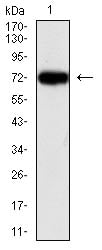
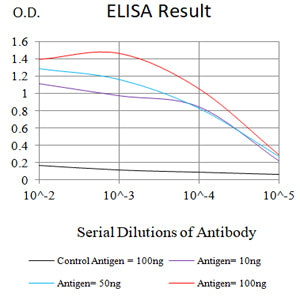
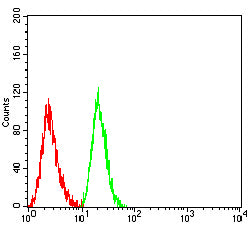
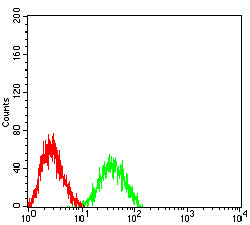
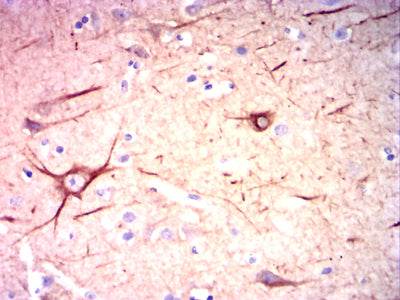
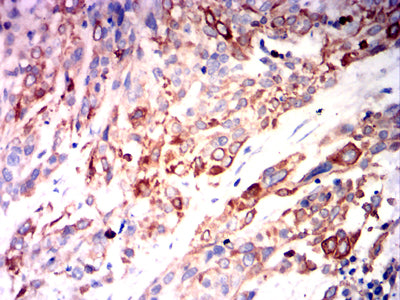
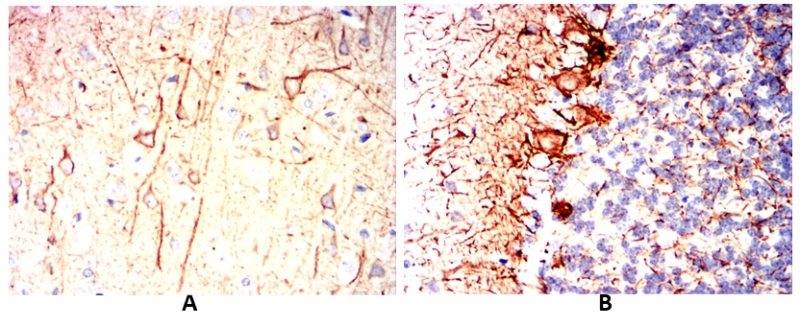
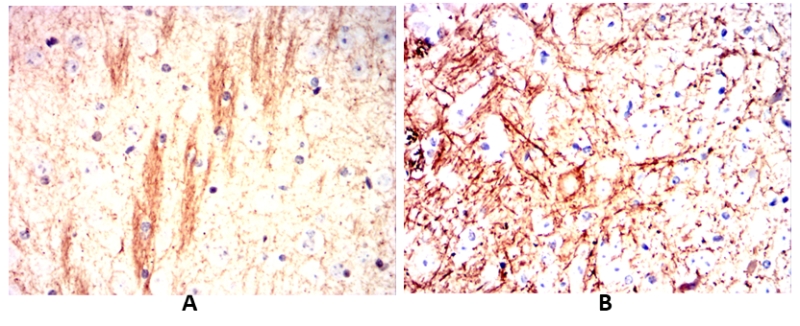
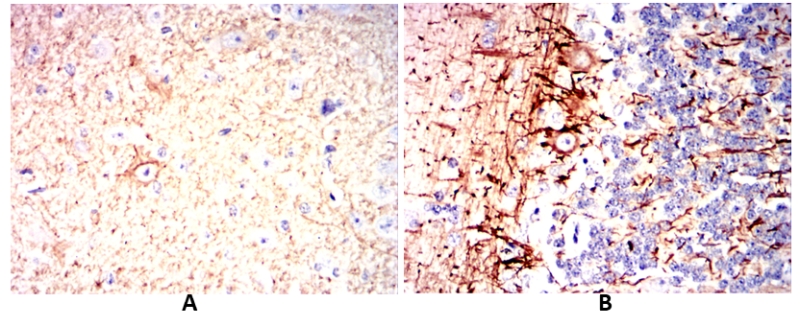
| WB | 1/500 - 1/2000 | Human,Mouse,Rat,Rabbit |
| IF | 咨询技术 | Human,Mouse,Rat,Rabbit |
| IHC | 1/100 - 1/500 | Human,Mouse,Rat,Rabbit |
| ICC | 技术咨询 | Human,Mouse,Rat,Rabbit |
| FCM | 1/200 - 1/400 | Human,Mouse,Rat,Rabbit |
| Elisa | 1/10000 | Human,Mouse,Rat,Rabbit |
| Aliases | NFL; NF-L; NF68; CMT1F; CMT2E; CMTDIG; PPP1R110 |
| Entrez GeneID | 4747 |
| clone | 2F8B3 |
| WB Predicted band size | 61.5kDa |
| Host/Isotype | Mouse IgG1 |
| Antibody Type | Primary antibody |
| Storage | Store at 4°C short term. Aliquot and store at -20°C long term. Avoid freeze/thaw cycles. |
| Species Reactivity | Human,Mouse,Rat,Rabbit |
| Immunogen | Purified recombinant fragment of human NEFL (AA: 1-200) expressed in E. Coli. |
| Formulation | Purified antibody in PBS with 0.05% sodium azide |
+ +
以下是关于NEFL抗体的3篇代表性文献摘要:
---
1. **文献名称**:*Neurofilament light chain as a biomarker in neurological disorders*
**作者**:Khalil, M., et al.
**摘要**:该研究探讨神经丝轻链蛋白(NEFL)作为神经退行性疾病(如多发性硬化症、ALS)的生物标志物价值,指出NEFL抗体在脑脊液和血液检测中的高敏感性,可用于疾病进展监测和治疗效果评估。
---
2. **文献名称**:*Antibody-based detection of serum neurofilament light chain in amyotrophic lateral sclerosis*
**作者**:Gille, B., et al.
**摘要**:研究验证了一种基于NEFL抗体的ELISA检测方法,证明血清NEFL水平与ALS患者的运动神经元损伤程度呈正相关,提示其作为ALS诊断和预后评估的潜在工具。
---
3. **文献名称**:*Neurofilament light chain in cerebrospinal fluid distinguishes Alzheimer’s disease from frontotemporal dementia*
**作者**:Rohrer, J.D., et al.
**摘要**:通过NEFL抗体检测脑脊液中的神经丝轻链水平,研究发现阿尔茨海默病患者的NEFL浓度显著低于额颞叶痴呆患者,表明其在鉴别不同类型痴呆中的临床应用潜力。
---
如需具体文献来源或补充更多研究,可进一步说明需求。
Neurofilament light chain (NEFL) antibodies are tools used to detect NEFL, a key structural protein in neurons. Neurofilaments, composed of NEFL, medium (NEFM), and heavy (NEFH) chains, form the neuronal cytoskeleton, maintaining axon integrity and enabling intracellular transport. NEFL, the smallest subunit, is critical for neurofilament assembly and stability. Its expression is predominantly observed in myelinated axons, making it a biomarker for axonal health.
In neurodegenerative diseases (e.g., Alzheimer’s, ALS) or neurotrauma, neuronal damage releases NEFL into cerebrospinal fluid (CSF) and blood. Antibodies targeting NEFL enable quantification of these levels, providing insights into disease progression and therapeutic efficacy. Commercial NEFL antibodies (polyclonal or monoclonal) are widely used in immunoassays (ELISA, Western blot) and imaging (immunohistochemistry) to study neuropathology. Recent advances in ultrasensitive assays, like SIMOA, have enhanced NEFL detection in blood, facilitating non-invasive monitoring.
Research also explores NEFL antibodies in autoimmune contexts, as anti-neurofilament autoantibodies are linked to neuroinflammatory conditions (e.g., multiple sclerosis). However, standardization of assays and interpretation of NEFL levels across studies remain challenges. Overall, NEFL antibodies serve as vital reagents in neuroscience research and clinical diagnostics, bridging molecular mechanisms to actionable biomarkers.
×